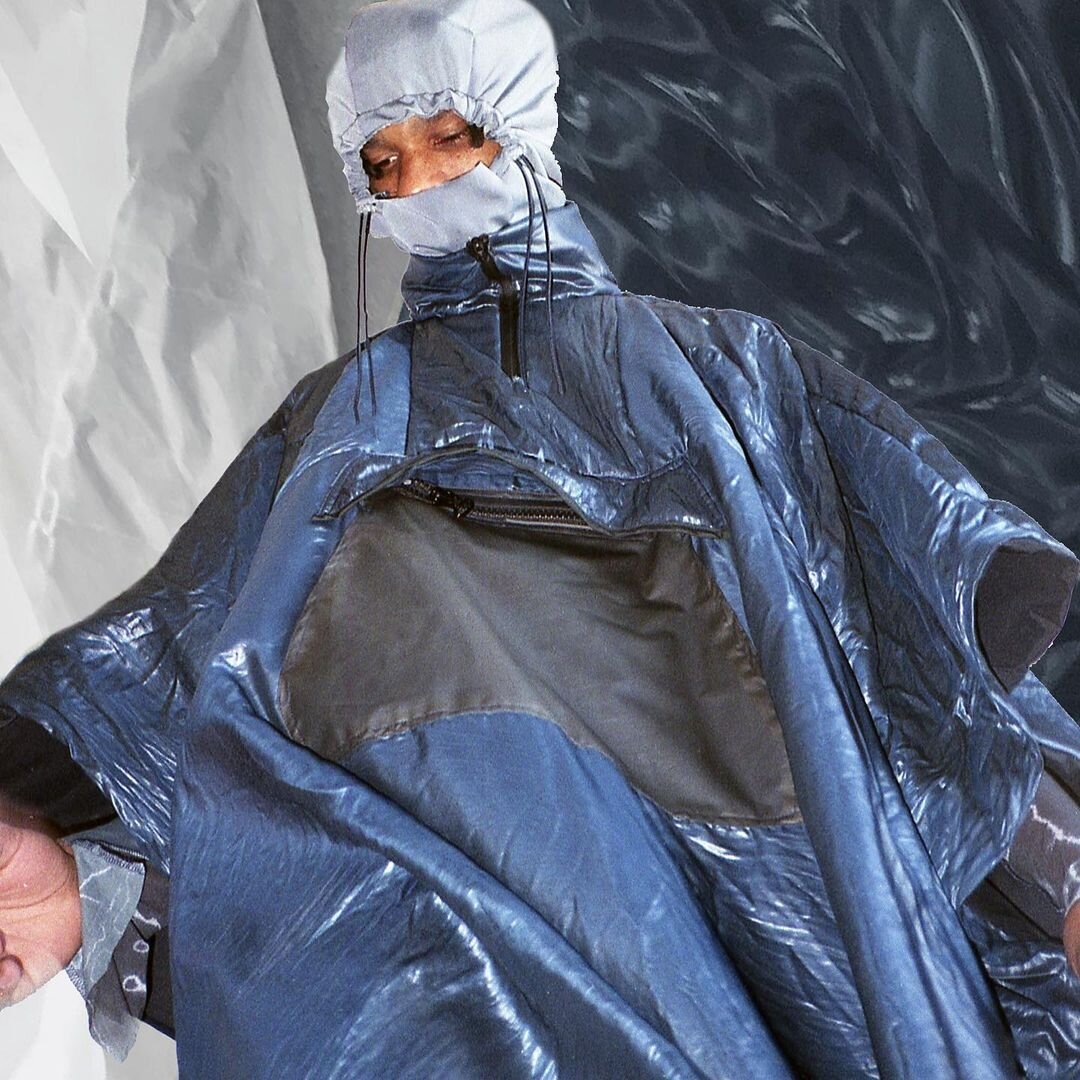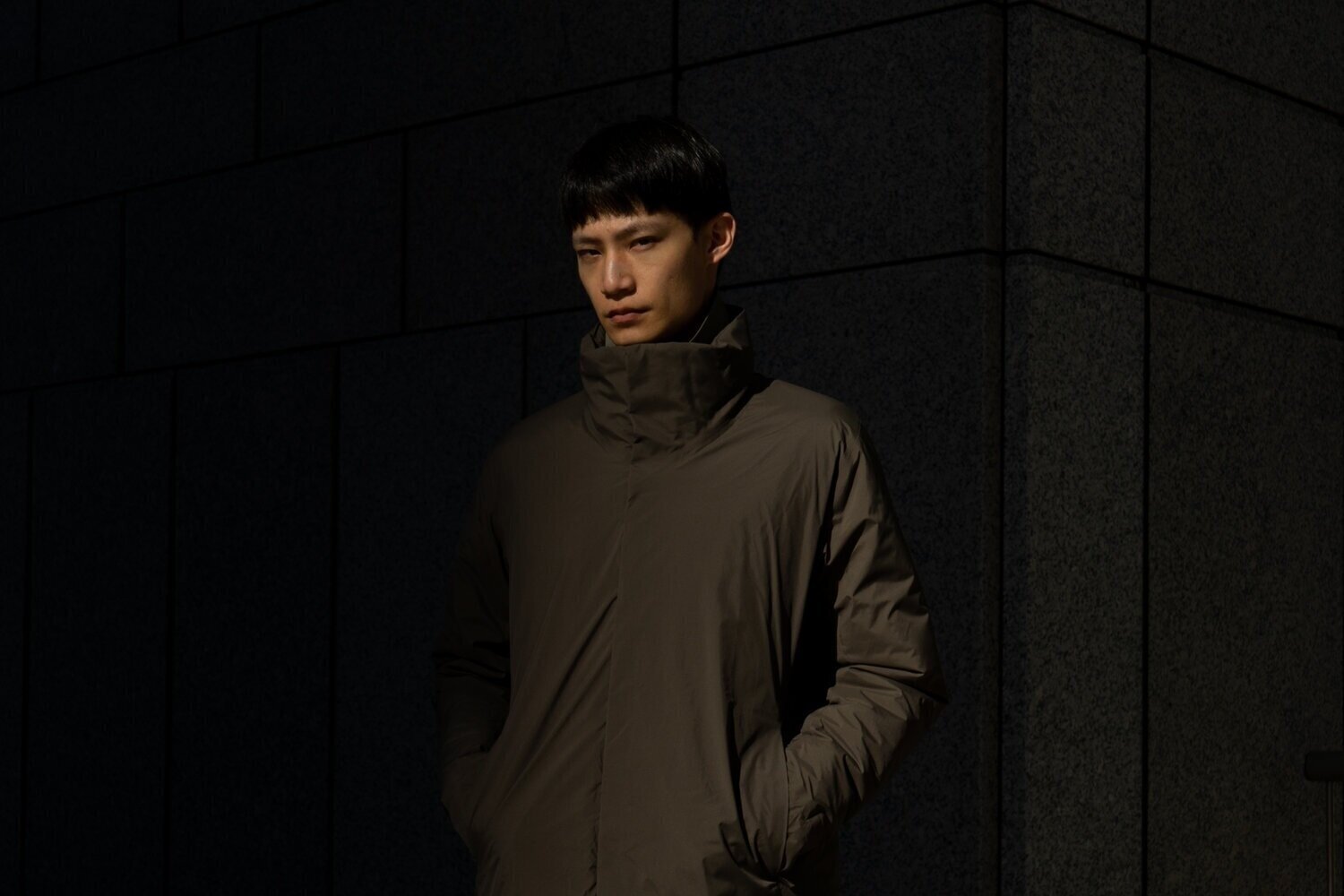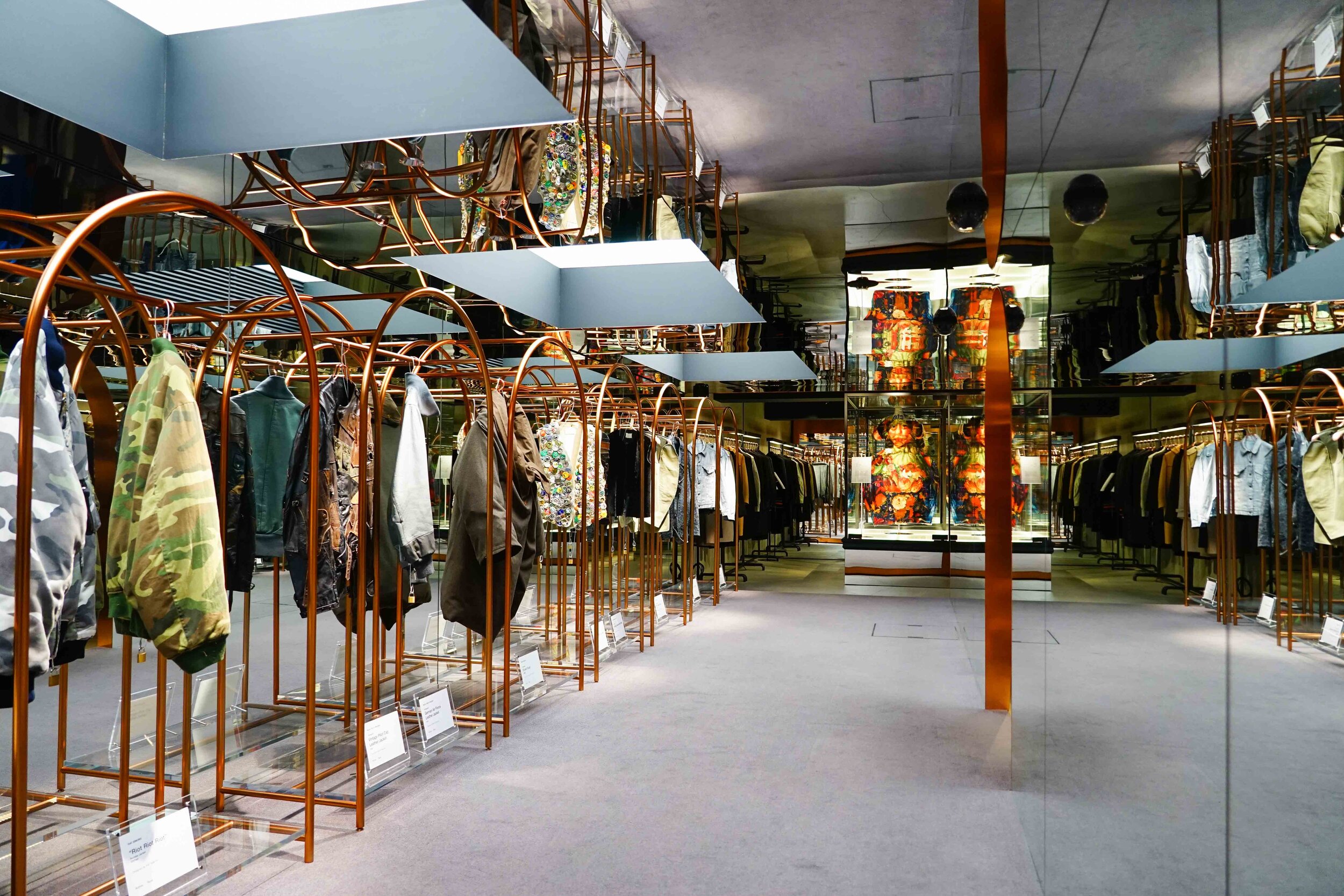The Rising Talent of Functional Design

Behind the scenes of our favourite brands, particularly those of a technical nature like Arc’teryx and Reebok, are individuals whose stories often go untold or are glossed over.
But, without these people working tirelessly behind the scenes, we would be without a lot of the great functional apparel, accessories and footwear we obsess over. For those at the other end of the spectrum who are following a more individualised path, whether that be working on a freelance basis or pursuing design as a creative outlet, their process may look a little different. No path is right, it’s just what suits you. For the purposes of this feature, we’re approaching the term ‘Technical’ as any garment that is engineered for a specific function.
Whether their process is informed by the high-performance nature of sportswear garments or they’re pushing our preconceptions of sustainability and functionality, they have earned their rightful spot on this list. Some of them are rising to prominence now whereas others have secured their rightful place in the industry through honest graft, but their backgrounds are equally as important. Let’s take a closer look.
JAIMUS -
‘I think my interest in ergonomics and technical garments stem from my earlier days of making furniture in my back garden. I enjoy multiple creative outlets but creating a product that is designed for someone to use, hold, feel and wear means it has to have function at the forefront. Technical garments follow this function lead design which often means it is also aesthetically pleasing [well to me anyway] due to the well thought out design with every seam existing for a reason.’
Jaimus Tailor is the mind behind Greater Goods, the London-based creative platform that is pushing the letter when it comes to sustainability and technical design by repurposing vintage garb. As we become increasingly aware of the detrimental effects fashion has on the planet, designers are finding ways to be more sustainable throughout the supply chain. There has long been a preconception that sustainability and performance cannot exist alongside each other in cohort, but Jaimus’ work at Greater Goods is putting a nail in that old mantra.
Despite having no formal design training to fall back on and paving his own way, everything Jaimus does has been self-taught up to this point. He’s a stellar example of following a creative urge and channelling it into something productive; it’s even better that he is so mindful throughout, too. You only have to look as far as his latest collaboration with Arc’teryx where they donated a portion of the proceeds towards Flock Together - a birdwatching collective for people of colour that encourages communities to reclaim green spaces and rebuild their relationships with nature.
Greater Goods has collaborated with Arc’teryx on a number of limited capsule collections whereby vintage outerwear and accessories are upcycled to suit their technical narrative. Despite some of the other names on the list, Jaimus’ work on Greater Goods is probably the most ‘left of field’ interpretation of technical design, but his work still embodies those same performance-oriented cues like GORE-TEX fabrications, Recco Systems and multiple zip configurations.
Finally, to further his collaborative prowess, he has recently joined forces with Nike London on a very limited capsule of 15 one-of-one garments. Each piece has been constructed using faulty or damaged Nike products which sees nothing go to waste! As a result, they have developed cargo vests, shorts, bottoms and headwear.
NICOLE MCLAUGHLIN -
"I love technical garments and any type of sportswear or gear because of the practical and utilitarian aspect of it… It's really important to me to have functional clothing, so that's why I tend to use these items to make hyper-functional projects. Some of those materials aren't usually used for clothing or footwear, so when you create those pieces you start to see a whole other world - puffer or Ripstop on slippers or items that you wouldn't normally expect to see it on.”
A pioneer in the upcycling movement, Nicole McLaughlin places an emphasis on using what is already there and turning it into something new, but often with a technical edge. Her creations get people excited and interested in the notion of sustainable design, delivering products that are lighthearted and playful. While the industry taps into sustainable practices more increasingly, Nicole’s creations show there is more to the notion than just recycled material contents or natural dyeing methods - both accepted here nonetheless, but sometimes you need to ease up
Her work has seen her repurposing LL Bean hiking packs and turning them into bottoms, umbrellas made using The North Face jackets and sandals plastered in Levi’s leather patches. Just by taking a scroll through her Instagram, you realise that she is really pushing the boundaries in a technical sense of what she can create from seemingly defunct household items. Even baguettes have been turned into vests! While a lot of brands and designers are focused on creating something sustainably for the sake of, Nicole is passionate about using what is already there and not placing a further burden on an already bursting system.
From a technical perspective, her recent appointment at Arc’teryx is a refreshing and interesting chapter in the history book of both parties. Given their unique backgrounds, McLaughlin’s rooted in upcycling and Arc’teryx’s in technical outdoors wear, they could be a force for change. They are focused on pushing the boundaries of technical materials, reducing pattern waste, and turning their attention to what already exists mainly through the ReBird and Used Gear programmes.
VICTOR LINKIMER -
‘Using mechanics and technical features to make interactive garments; garments that have their own built-in choreography that unfolds like a dance between the wearer and it. That’s what drives me. The technicality of my work is a tool I use to create clothes that encourage moving and touching’
Hailing from Copenhagen, Viktor Linkimer, who goes by the online pseudonym of someflyingdude, is one of many young, emerging designers from the Danish capital. Linkimer is 21 and is currently studying at The Royal Danish Academy of Design where he is pursuing his creative urges - something he traces back to an early interest in architecture at the age of 11/12 where he became enamoured by the work of Danish architect, Bjarke Ingels. Later on, Viktor stumbled on ACRONYM®’s ‘Acronymjutsu’ demonstrations - a moving image display of the multiple features of ACRONYM® garments. With a shared interest in both the forms of architecture and fashion design, Viktor realised, ‘That creating a jacket is bit faster and easier than a building, which was also attractive to me.’ Having come to the realisation that he could somewhat combine his passion for both of the latter, he attended a one-year introductory course at ‘The Textile School’ which granted him access to The Royal Danish Academy of Art, which is where we stand today.
So, having amassed some pretty handy skills with a sewing machine, Viktor is working on some small-scale design gigs alongside his studies, nothing serious but enough to pick up some traction online and garner a small following. Through his custom work, he is focused on garments that explore more than visual aesthetics and how they interact with the body through movement and sense - defining technical design in his own right.
ROB BOYD -
‘The key purpose to any of my design work should be that the outcome solves a problem or improves the wearer's performance in some way. Sporting/Utilitarian performance enhancing product!’
For existing Sabukaru readers, you may already be aware of Rob Boyd and the work he is doing in the technical and sportswear focused design sphere. Originally from Bristol, in the South-West of the United Kingdom, it’s a city with a thriving creative scene from graffiti and music, to art and design. Growing in Bristol, as well as being raised by two parents from creative backgrounds, has evidently informed Rob’s vision more than we can outline. Despite still being young, Rob’s portfolio is littered with some of the biggest names in the industry, having held postings at the likes of adidas’ Y3, Converse and Soar Running. His approach to technical design is heavily inspired by early 2000s sportswear garments with a particular interest in Nike, Commes des Garcons and Gyakusou. There are clear parallels between some of the most coveted technical garments from this era with the pieces he has created for his own label, still, yet to be released, and Soar Running.
In a recent interview featured on Greater Goods site, coincidentally also featured on here, Boyd spoke about some of the aspects of technical design that intrigue and lure him in, ‘I’ve always been interested in the finer details: why certain garments have articulated knees and why certain garments feature heavy duty laminated zippers, etc. All those things always caught my eye.’
Recently, he worked alongside Jaimus Tailor and Kseniia Sofianatos to explore the technical capabilities of leather on a project called Motion by EL3. EL3 is about further exploring the technical capabilities of one of the Earth's oldest natural materials - leather - and pushing it to newfound applications through collaborations between tanneries and technologists, brands and multidisciplinary creatives.
ROBYN ARLO -
‘What draws me to design apparel within the technical space is that technical design is all about problem solving, and engineering a product to be fit for a function or purpose. Having a fastidious and hands on approach also draws me to designing sportswear, where at Rapha, the challenges lie within problem solving for the modern day cyclist. It’s mad how much I have learnt about technical apparel design from a cycling perspective and how much my design mindset has shifted as a result.’
Juggling a number of technical design focused projects, Robyn is an apparel designer for Rapha - a performance-based cycling brand - and is currently based in London. Despite Robyn’s background being more fashion-based, having studied fashion at Kingston School of Art, a number of postings at certain brands and the urge to explore creative ideas has only furthered her function focused prowess. In the run up to her current design role at Rapha, Robyn worked under the senior men's outerwear designer for the Boss Men’s Casual line at Huge Boss, followed by a stint at adidas on the running apparel design team. With these experiences under her belt, ‘it really opened my eyes to technical and functional design, more specifically high-performance apparel that is sport specific.’
Like we mentioned, Robyn juggles a couple of design-related projects and, alongside her role at Rapha, her personal work aside from that is where her inspirations and capabilities can truly flourish. Despite taking a backseat due to her current obligations at Rapha, Robyn’s personal designs are a reflection of 90s sportswear with a technical and performance-focused tingeIn addition, there are also architectural undertones to her work with an understanding of how space can influence individuals - informing their health and wellbeing depending on situational hazards.
Most importantly, and no disrespect to Rapha, but keep an out on Robyn’s personal work where she combines technical design with circularity to increase the longevity of garments and discarded materials. She’s a bit of an eBay whizz. You know, those people we should be jealous of for finding the most coveted gems for silly prices.
JAKE BAKER-CLIFF -
’I’m drawn to the technical orientation of design through my fascination with the power functional design has in progressing fashion as a form of social activism and helping individuals to feel more confident in tackling daily tasks.’
Motivated by creating purposeful designs with a technical side to them, Jake’s passion is rooted in sports and the outdoors which sparked his initial interest in functional design. Although, having grown up seeing his twin sister overcome daily societal challenges due to her disability, this has partly informed his process and methodology. More recently, Jake has begun developing technically charged garments that are rooted in forward-thinking solutions for those with additional needs, such as restricted movement or inhibited vision. Through wecanfly, Jake is creating technical designs with real-life applications for disabled people. The main purpose is to work with individuals and charities to provide accessible clothing; it just so happens that clothing of a technical nature is better suited to accommodate the needs of these people.
Wecanfly’s first ever product was the BlindAid Jacket which was designed with assistance from members of BlindAid focus groups - London’s oldest charity for the blind and visually impaired. For a quick rundown, the jacket has been constructed using 81 individual pieces, the majority of which make up the camo all-over print - a mil-surp fabric courtesy of Halley Stevenson’s which is a Hybrid Aero waxed cotton. There is a whole slew of technical details including magnetic-closure pockets for ease of access, EMF protective fabric, extended pull tags and seam taping, to name a few. To interact seamlessly with the wearer, it has been ergonomically engineered to allow for freer movement and easy access, such as articulated sleeves and an asymmetric central placket.
The work Jake is doing is highly commendable. I mean, how many designers are out there creating such meaningful garments that will have such a profound effect on the wearer's day-to-day life? Also, with the ongoing assistance from one of the worlds largest technical sportswear brands, C.P. Company, a label rooted in pushing innovation forward, the possibilities for wecanfly are endless.
RYAN FORSYTH -
‘I am always interested in pieces that have a hyper-specific purpose. The fact that it was designed with something bigger in mind is what always gravitates me towards replicating and expanding upon that authenticity in the work I do. The story plus research is what I hope captures people's interest and inspires them to dive deeper.’
When you think of function-forward technical footwear, your mind is drawn to the likes of Salomon, Hoka One One and Merrell, but Reebok is slowly creeping onto that scene, seemingly under people's radar. One of the individuals working tirelessly behind the scenes is Ryan Forsyth, Reebok’s Global Product Manager on their Special Projects and Collaborations team; yes, it is quite a mouthful but it’s a position that footwear enthusiasts can only dream of. In his role, Ryan identifies partners and creates strategies for collaborations, which has included the likes of Mountain Research and Kanghyuk, to create new productions with. Alongside this, Ryan also works on creating “Fashion Inline”, where they make Reebok mono-branded products for ‘Top Tier’ fashion distribution. By the way, it’s important to note that Ryan works alongside a concise but dedicated team at Reebok - he isn’t a one-man machine.
With footwear and apparel design, I’ve always found it interesting to know what areas of inspiration the designers and creatives tap into. For Ryan, he likes to dive into the Reebok archive picking elements from road running, track and trail shoes alike and interpreting that in a modern sense. Typically, this delivers a whole host of technical features embedded into the footwear which is a given when the process is informed by vintage performance-driven styles. On the other end of the spectrum, Ryan looks to artists like Nancy Holt, Richard Long, Michael Heizer, and Mary Miss who dedicate vast amounts of time to their craft, in a similar way working painstakingly to deliver a product.
SUFFI ZHANG -
‘I prefer to take clothing as a product and return to the most basic thinking. That is, for the most part, the interaction between the clothes function and individuals who wear them, which is bound to be technical. The biggest obsessions of mine when it comes to design are looking for updated technology and materials, better wearing experiences and solutions that not only make people satisfied with their costumes but also lift the clothing to the next generation of evolution.’
Another young name to add to our list is Suffi Zhang, a fashion technology MA student from Bunka Fashion Graduate University in Tokyo. Suffi grew up and lived in Xinjiang, China, until he was 18 - a region that is geographically close to Central Asia, where the ancient Silk Road brought those from all cultures and religions.
His outlook on design is heavily centered around ‘Balance’, a concept that has always interested me. Through this, he seeks to combine polars like old and new technology, traditional costumes and modern clothing, Eastern and Western culture, space and wrap, nature and man made.
Zhang’s first year project, titled ‘Call of the Valley’, which shares its name with the 1967 album by Indian music producer, Hariprasad Chaurasia, was his first chance to express his take on functional design. The garments that Suffi has produced combines the dress of central Asian nomads with modern, technical outdoor clothing, seeking to strike a balance between these two worlds of design. Like many designers before him, Zhang's 'Call of the Valley' project seeks to start a dialogue between traditional and natural techniques and new technologies, such as combining NANO-WING - a water-repellent cotton made in Japan - with a DWR finished silk from Kyoto.
Valuing and appreciating culture so deeply is what inspires Suffi to find out and think about new forms and possibilities for them. Oftentimes, he fuses this into clothing through his interpretation of balance, combining age-old fabrics with modern methods of design and giving us a glimpse of his perspective of ‘Technical Design’ - a clerical term that varies from creative and designer alike.
As we round the list off, hopefully it has drawn your attention to some of the individuals working behind the scenes and those pursuing their own projects and urge you to seek out similar people and follow their creations and, if possible, support them in any way you can. With such a diverse array of talented designers, all dabbling in technical design in their own way, the future's looking bright!













